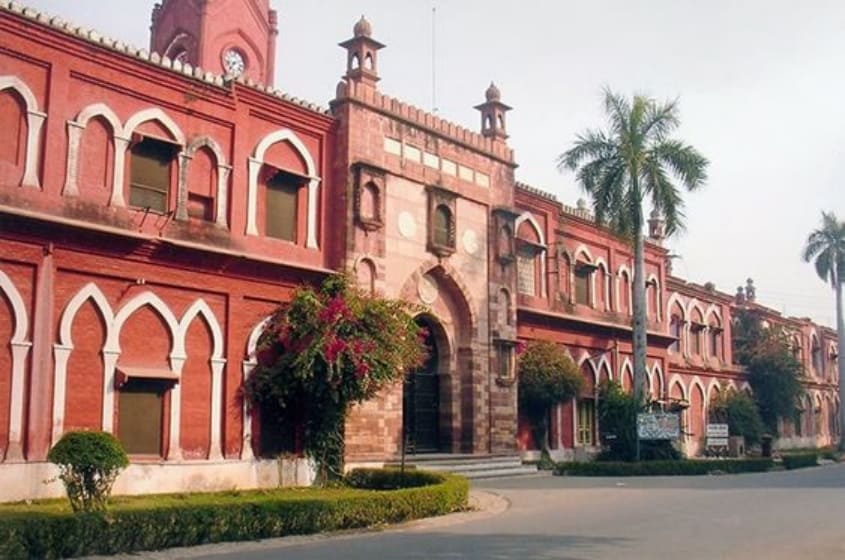The Supreme Court overturned a 1967 ruling on AMU’s minority status, reigniting debate on institutional autonomy, cultural preservation, and inclusivity in public education.

New Delhi: The Supreme Court of India, on Friday, delivered a pivotal ruling by overturning the 1967 S. Azeez Basha vs. Union of India decision that denied Aligarh Muslim University (AMU) minority status. In a 4:3 majority decision, the seven-judge bench led by Chief Justice of India (CJI) D.Y. Chandrachud overturned the earlier verdict, which had held that AMU could not be considered a minority institution because it was established by a parliamentary statute. This decision is expected to have far-reaching implications for the administration and reservation policies at AMU and similar educational institutions across the country.
Key Judgments and Dissenting Opinions
The Supreme Court’s judgment was complex, with four separate opinions. Chief Justice Chandrachud, along with Justices Sanjiv Khanna, J.B. Pardiwala, and Manoj Misra, authored the majority opinion. Meanwhile, Justices Surya Kant, Dipankar Datta, and Satish Chandra Sharma dissented, arguing that the university’s status as a centrally established institution under the 1920 AMU Act negates its claim to minority status.
CJI Chandrachud stated that a minority institution can be established even if its legal character is derived through a statute. This overturns the 1967 ruling, which had asserted that an institution established by a statute could not be regarded as a minority institution, regardless of its origin.
Historical Background: The S. Azeez Basha Verdict
The roots of this complex legal issue trace back to the landmark 1967 Supreme Court judgment in the S. Azeez Basha case, which ruled against AMU’s minority status. The court had argued that AMU, being created under the 1920 AMU Act by the British Indian government, could not be classified as an institution established by the Muslim community. Since the Muslim community did not “establish” the university per se, the judgment denied the application of Article 30(1) of the Indian Constitution, which grants religious and linguistic minorities the right to establish and administer their educational institutions.
The 1981 Amendment and Its Contentious Legal Standing
In 1981, the Indian Parliament enacted an amendment to the AMU Act that sought to confer minority status on AMU. This legislative move attempted to correct what some regarded as historical oversight, aiming to officially recognize AMU as an institution established primarily to serve the Muslim community’s educational and cultural needs. However, in 2006, the Allahabad High Court invalidated the minority status provision, ruling it unconstitutional, which further added to the legal entanglements.
The recent Supreme Court decision has essentially reopened this complex question. The matter was referred to the seven-judge bench in 2019, and the current ruling sets new legal precedents on the interpretation of minority rights and the relationship between statutory establishment and community-founded educational institutions.
Chief Justice Chandrachud’s Interpretation of Minority Rights
Chief Justice Chandrachud, writing for the majority, highlighted the broader purposes of Article 30(1) in preserving the cultural fabric of minority communities. According to him, it is not necessary for a minority educational institution to be exclusively administered by its community, nor does it lose its minority character if individuals from other backgrounds are involved in its governance. What is essential, CJI Chandrachud argued, is that the institution serves the predominant cultural and educational aspirations of the minority community.
In a significant observation, the CJI noted that the legal recognition of a minority institution should not be strictly bound to the initial formalities of its establishment. Rather, he emphasized that if an institution is historically intended to serve a community’s educational needs, this objective should be considered when determining its minority status.
The Role of Article 30(1) in Protecting Minority Educational Institutions
Article 30(1) of the Indian Constitution plays a central role in this case, as it enshrines the rights of minorities to establish and manage educational institutions that align with their religious or linguistic heritage. This provision has long been a cornerstone of India’s approach to minority rights, ensuring that educational institutions linked to a community’s identity have sufficient autonomy to maintain their cultural and educational missions.
Chief Justice Chandrachud, in his judgment, emphasized that the state’s regulations should not infringe upon the institution’s fundamental character. According to him, the right to administer granted under Article 30(1) is not merely symbolic but serves as an operational safeguard to allow communities to preserve and develop their distinct educational models.
Returning to a Three-Judge Bench for Minority Status Decision
The majority ruling did not settle AMU’s minority status but returned the issue to a Regular Bench for further examination. The seven-judge bench determined principles on minority institution criteria, which will guide the three-judge panel in assessing AMU’s status under the refined framework of the recent judgment.
Government’s Position: National Character vs. Minority Identity
The Indian government, represented by the Solicitor General, has consistently opposed AMU’s minority status, arguing that the university’s funding and statutory framework as a centrally governed institution imply a “national character.” This stance aligns with the 1967 judgment and reflects the view that institutions designated as of national importance should not represent a single community, as it could limit their inclusivity.
However, AMU advocates argue that the institution was envisioned by the Muslim community, particularly under the vision of Sir Syed Ahmed Khan, who established the Muhammadan Anglo-Oriental College in 1875, which later evolved into AMU. Supporters contend that the educational mission of AMU has remained deeply connected to the Muslim community’s cultural heritage.
Implications for Reservation Policies and Institutional Autonomy
A significant impact of the judgment relates to reservation policies. If AMU were granted minority status, it could offer up to 50% reservation for Muslim students, distinguishing its admission policies from other central universities. Without minority status, AMU would be required to follow standard reservation policies applicable to all centrally funded institutions.
Currently, AMU maintains an internal reservation system, which allocates 50% of seats to students from its affiliated schools and colleges. However, if minority status is not ultimately recognized, AMU may face pressure to adopt national reservation guidelines for both faculty and students, reshaping its admissions landscape.
A Broader Debate: Autonomy, Inclusivity, and Cultural Preservation
The AMU case underscores the larger debate about the balance between institutional autonomy and inclusivity in public education. Proponents of AMU’s minority status argue that preserving cultural heritage in education can coexist with broader societal objectives. They assert that minority institutions like AMU play a unique role in fostering the cultural identity of communities while contributing to the nation’s educational diversity.
Opponents, however, argue that publicly funded universities should adhere to secular, inclusive frameworks, especially when substantial government resources are allocated to their maintenance. They contend that public institutions should remain accessible to all communities without favoring specific groups.
Future Outlook: A Test for Legislative and Judicial Interpretations
The Supreme Court’s ruling to revisit the issue of AMU’s minority status through a three-judge bench will have lasting implications for Indian higher education. The judgment redefines minority rights within public institutions, creating a nuanced framework that acknowledges both statutory and community-driven establishment factors.
The legal battle over AMU’s status also highlights the complexities surrounding minority rights in education, illustrating the interplay between legislative amendments, judicial interpretation, and shifting socio-political perspectives. As India navigates these complexities, the outcome of this case will likely influence similar institutions and the legislative strategies employed to protect minority rights in education.
Conclusion
The Supreme Court’s 4:3 decision overturning the 1967 Azeez Basha judgment marks a new chapter in the legal discourse surrounding Aligarh Muslim University’s minority status. The decision reframes the criteria for minority institutions, prioritizing their mission and cultural significance over statutory technicalities. As the case returns to a smaller bench, the legal and societal implications of AMU’s status remain in focus, promising to impact the landscape of higher education in India and redefine the role of minority institutions within the nation’s constitutional framework.

